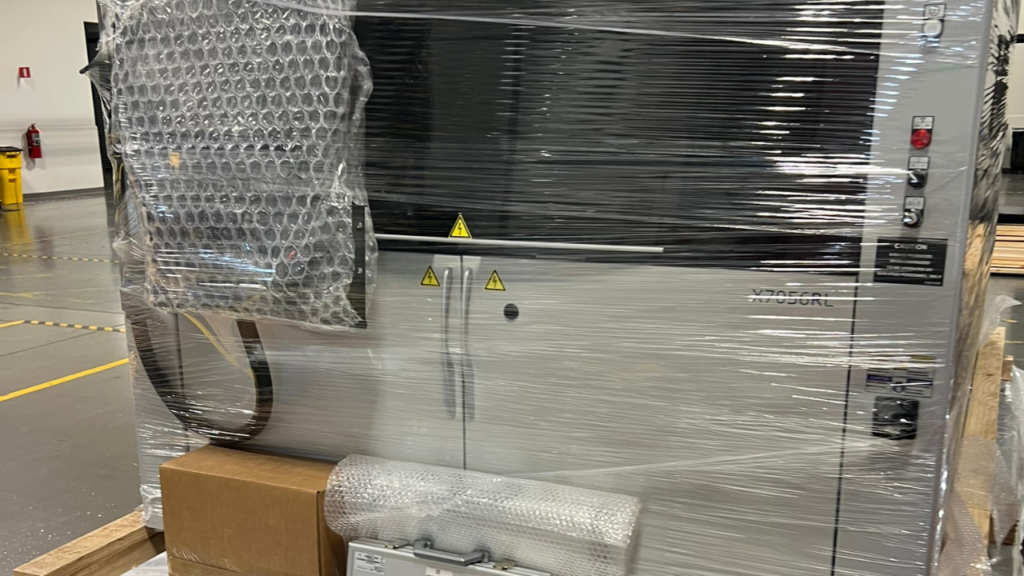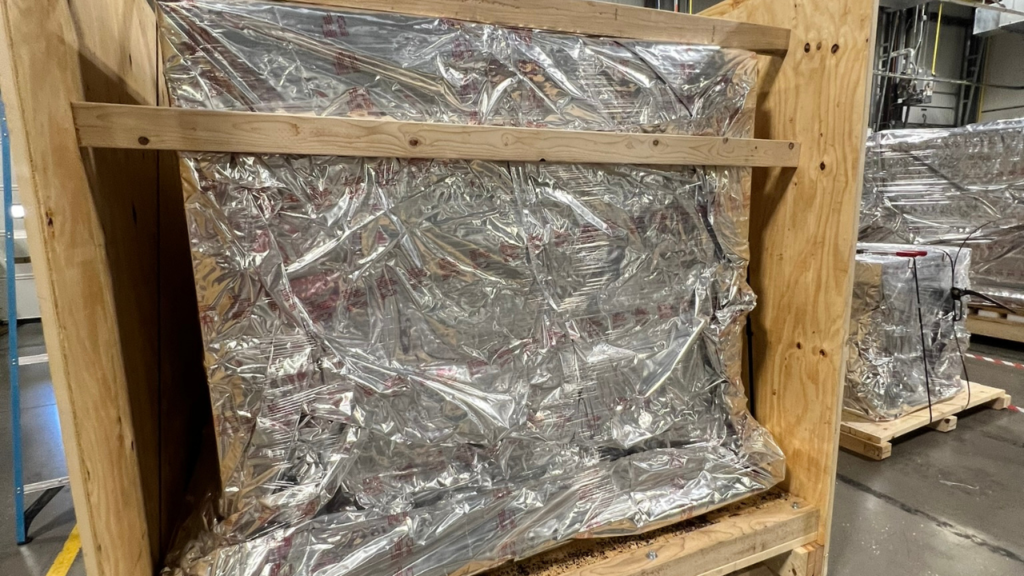Electrostatic discharge (ESD) poses a significant risk to sensitive electronic components and semiconductors. Even a tiny static charge, invisible to the human eye, can damage intricate circuitry or degrade component performance over time. For industries like electronics manufacturing, semiconductors, and aerospace, where precision and reliability are critical, static-safe packaging is essential.
This blog explores the importance of ESD-safe materials, how they prevent electrostatic damage, and best practices for protecting valuable equipment during shipping and handling.

What is Electrostatic Discharge (ESD)?
ESD occurs when two objects with differing electrical charges come into contact or close proximity, causing a sudden flow of electricity.
Why is ESD a Problem for Electronics?
- Delicate Components – Integrated circuits and microchips are highly sensitive to voltage fluctuations caused by ESD.
- Hidden Damage – ESD can cause latent defects, where equipment functions temporarily but is more likely to fail over time.
- Increased Costs – Repairing or replacing damaged equipment can lead to significant financial losses and production delays.
How ESD-Safe Packaging Protects Equipment
Static-safe packaging is specifically designed to shield sensitive components from electrostatic charges. Key features include:
1. Conductive and Static-Dissipative Materials
- Conductive Materials – These create a path for static charges to flow away from sensitive components, preventing buildup.
- Static-Dissipative Materials – These materials slowly dissipate static charges into the environment, reducing the risk of sudden discharges.
Common Applications:
- Semiconductors – Protecting delicate chips from stray static charges.
- Medical Electronics – Ensuring reliability for devices like pacemakers and imaging tools.

2. Anti-Static Linings and Wrapping
- Anti-static wraps reduce the risk of static buildup during handling.
- Used to wrap individual components or line crates.
- Combines with cushioning materials to provide both impact and ESD protection.
Common Applications:
High-Tech Manufacturing Equipment – Shields touchscreens, circuit boards, and processors.
Best Practices for ESD-Safe Packaging
1. Use Certified ESD-Safe Materials
- Look for materials certified to meet ANSI/ESD S20.20 standards or equivalent.
- Examples include ESD bags, foam inserts, and conductive totes.
2. Avoid Regular Plastic or Foam
- Non-ESD-safe materials can generate static, even if used as cushioning.
- Opt for anti-static or static-dissipative alternatives for complete protection.
3. Maintain Environmental Controls
- Reduce static risk by controlling humidity levels and minimizing friction in storage areas.
4. Train Personnel
- Ensure staff handling sensitive equipment understands proper ESD-safe procedures, such as wearing anti-static wrist straps and avoiding unnecessary handling.
Case Study: Static-Safe Packaging for Semiconductor Shipping
The Challenge
A global semiconductor manufacturer needed to ship a batch of high-value microprocessors to an overseas assembly facility. The processors were highly sensitive to ESD and required complete protection from static during transit.
The Crating Technology Solution
- Designed custom crates lined with anti-static foam inserts for vibration and ESD protection.
- Wrapped each processor in static shielding bags.
- Provided staff training on static-safe handling and unpacking procedures at the destination

The Outcome
The shipment arrived with zero damage or defects, saving the manufacturer potential repair costs and production delays. The client implemented Crating Technology’s ESD packaging standards across all global shipments.
Why Choose ESD-Safe Packaging?
Using static-safe packaging is not just about protecting your shipment—it’s about safeguarding your investment, ensuring reliable performance, and maintaining customer trust. By incorporating ESD-safe materials and best practices, Crating Technology provides reliable solutions for industries where precision and safety are critical.
Conclusion
Whether shipping semiconductors, medical electronics, or aerospace components, protecting your equipment from ESD is non-negotiable. Contact Crating Technology today to learn more about our custom ESD-safe packaging solutions and how we can help you ship with confidence.



